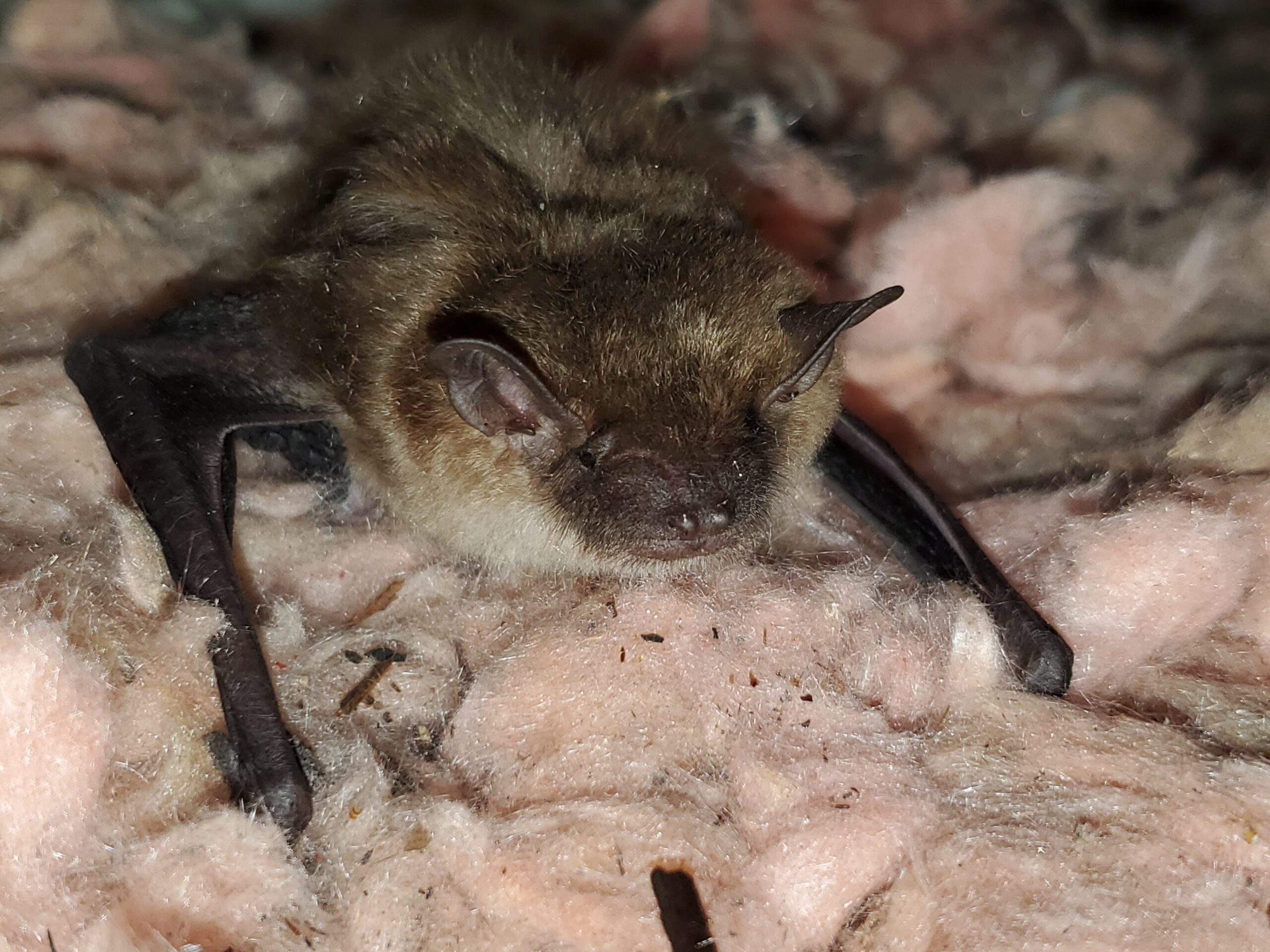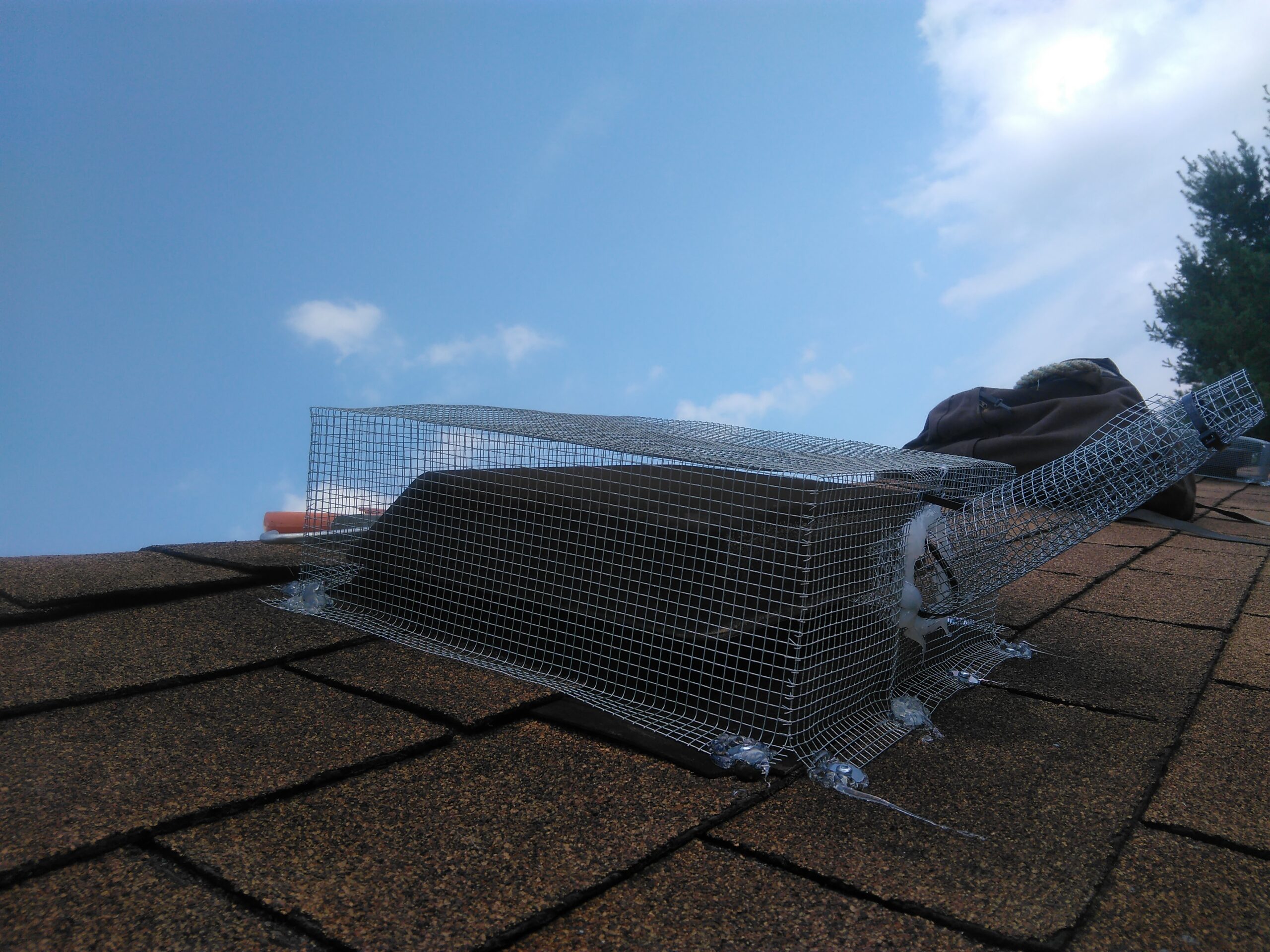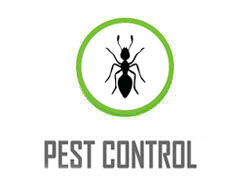
Why Do Bats Live In Homes?
Of all the species of wildlife that Skedaddle humanely removes and excludes from properties, bats are far and away the most misunderstood. Despite their small size, bats have little trouble inducing fear and anxiety in humans. The ancient myths and misperceptions surrounding bats continue to this day, and though they can be harmful to humans, bats play an important and beneficial role in the ecosystems they call home. A single bat can consume up to 600 mosquitoes in a night. Fortunately, Skedaddle Humane Wildlife Control’s trained bat specialists are available to help you get rid of the bats in your home.
The very thought of a bat flying around their bedroom is enough to drive most homeowners into a panic. Many are surprised and shocked to learn that their attic has become home to a colony of winged guests. Although eighteen types of bats are found in Canada, the most common varieties living inside man-made structures are the Little Brown Bat and the Big Brown Bat. Colonies can range in size from a dozen to several hundred. Little Brown Bats typically live in larger colonies than Big Brown Bats. When insects are active, both kinds of bats will begin exiting their roosts to feed almost immediately after dusk, returning to the roost before first light. Bats are insectivores, feeding primarily on small flying insects like mosquitoes, moths, wasps, and beetles that they capture mid-flight.
WHERE DO BATS LIVE WITHIN A HOME?
Homes and attics provide bats with warm and consistent temperatures as well as protection from predators when they are not feeding. A firm understanding of bat biology and behaviour is critical to their control. Bats in Canada enter hibernation in early September as the weather cools and flying insects become harder to find. During winter some bats will migrate several hundred kilometers to large communal roosts located in caves and abandoned mines. Still, the majority of Little Brown Bats and Big Brown Bats will spend their winters inside man-made structures. It is not entirely uncommon for bats living in the attic to find their way into the living space of a home in the dead of winter as sudden increases in temperature can cause bats to awaken from hibernation.
In spring and summer, female bats find the high temperatures of attics ideal for raising their babies. During the day, they will find a cozy section of the attic to rest, only emerging at night to feed. Many people find it difficult to think of bats as part of the urban wildlife landscape. In reality, bats are as at home in large urban centres as they are in small rural communities. Bats will often choose homes and buildings near bodies of water, where insects can be found in abundance.
EXPERT REMOVAL IS THE SOLUTION TO YOUR BAT PROBLEM
Given that bats require a gap no larger than a dime to enter, nearly every home is a candidate for intrusion, regardless of age, condition or style. Skedaddle performs bat exclusions and removals from new construction housing developments as well as 100-year-old farmhouses. Homes, even those that are well-maintained, are not designed to keep bats out. Structural gaps are almost always available to provide entry. Once a home has been colonized by bats the odour from their urine and feces serves as an attractant for others. To ensure that all bat entry points are identified, Skedaddle performs a comprehensive inspection of your property, including the roof. Without a complete understanding of how the bats are entering, it is impossible to solve the problem.

Once the bats have been removed, our technicians will clean out any bacteria or damage caused by the colony and seal every entry point with galvanized steel screens. Wildlife exclusion sealant will then be used to fill any left over holes bats could use in the future. Get in touch with Skedaddle today and ensure your home is free from bats for good 1-888-592-0387.
CALL US TODAY
1.888.592.0387
OR
Request for Services



FOLLOW US